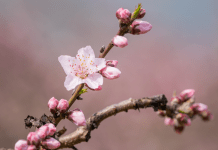Spring is here in Arizona, bringing with it blooming flowers and budding trees. A picturesque scene for many, but for kids prone to seasonal allergies, it can be a time of discomfort and frustration. As a concerned parent, understanding how to identify and manage your child’s seasonal allergies can make a world of difference in their well-being. Here’s what you need to know to help your child through allergy season.
Understanding Symptoms of Allergies vs. Illness
Allergy symptoms can mimic the feeling of a cold or the flu, making it difficult to determine the best course of treatment. Unlike a cold, allergies are not viral infections and are instead a response to the increased pollen in the environment. This leads to an increased production of mucus, sneezing, itchy and watery eyes as well as coughing. These symptoms may be similar to the common cold, but are not accompanied by fever, muscles aches and pain. The first step for treatment is to start with an over-the-counter antihistamine to see if their symptoms diminish.
If they persist, then it’s time to pursue cold and flu treatments.
Consequences of Untreated Allergies
Seasonal allergies can be more than just a nuisance; instead having lasting consequences on your child’s health and wellbeing. Long-term allergy symptoms can lead to fatigue, poor sleep, and concentration in school due to discomfort and an increased risk for ear and sinus
infections. Allergies can also trigger asthma symptoms and even behavioral issues stemming from discomfort and lack of sleep.
Preventing Symptoms
Avoid exacerbating symptoms by keeping windows in your car and home closed to filter the
pollen out of the air. If you dry clothing outside, utilize the dryer during high pollen levels to prevent it from coating the clothing. If your child spent some time playing outside, encourage them to wash their hands and face as soon as they come in to avoid tracking any pollen around the house. Incorporating baths during your child’s bedtime routine is also a great way to prevent nighttime allergy issues.
Navigating Treatment Options
There are quite a few treatment options to ease your child’s allergy symptoms and prevent
more discomfort. From oral antihistamines to nasal sprays and eye drops, there are solutions tailored to address your child’s specific needs. However, it is important to approach medication use with caution and consult with your pediatrician before starting any new regimen.
Childhood seasonal allergies can present unique challenges for both parents and kids alike, but with the right treatment and routines you can effectively manage your child’s symptoms. By taking proactive steps to address allergies and prioritize your child’s health you can ensure they enjoy the wonders of each season to the fullest.
For more information or to make an appointment, visit https://www.relieveallergyaz.com/ or call (480) 500-1902.
 Dr. Julie Wendt earned Bachelor of Science degrees in biochemistry and biology honors from the University of Illinois, a Ph.D. in microbiology and immunology from Vanderbilt University and a Doctor of Medicine degree from the University of Tennessee College of Medicine. She completed residency at Rush-Presbyterian-St. Luke’s Medical Center and an allergy and immunology fellowship at Rush University Medical Center, both in Chicago. In private practice since 2005, Dr. Wendt has published a great deal of research. She has received the American Medical Association Physician’s Recognition Award, a Patient’s Choice Award and is noted as one of America’s Top Physicians. Dr. Wendt is former President of the Arizona Allergy and Asthma Society. For more information, visit https://relieveallergyaz.com/.
Dr. Julie Wendt earned Bachelor of Science degrees in biochemistry and biology honors from the University of Illinois, a Ph.D. in microbiology and immunology from Vanderbilt University and a Doctor of Medicine degree from the University of Tennessee College of Medicine. She completed residency at Rush-Presbyterian-St. Luke’s Medical Center and an allergy and immunology fellowship at Rush University Medical Center, both in Chicago. In private practice since 2005, Dr. Wendt has published a great deal of research. She has received the American Medical Association Physician’s Recognition Award, a Patient’s Choice Award and is noted as one of America’s Top Physicians. Dr. Wendt is former President of the Arizona Allergy and Asthma Society. For more information, visit https://relieveallergyaz.com/.

















